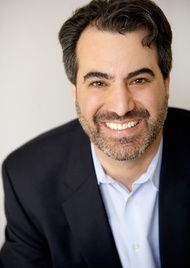By: Ron Pernick

At the recent Fortune Brainstorm Green conference which I attended in Laguna Niguel, California, there was a host of U.S.-focused presentations and conversations. The ongoing themes and dialogue provided significant insights into the current state of affairs in the U.S. clean-tech market, including:
What will happen to the wind power market if the federal production tax credit isn’t extended before the end of the year? (Answer: It will likely crater to near zero in 2013 after strong deployment in recent years.)
What does low-cost natural gas mean to the future of the renewables industry?(Answer: It could have a very significant impact, but renewable portfolio standards in dozens of states, along with utility and regulatory desire for a diverse energy portfolio, should help soften the blow.)
How will social media and Internet-enabled businesses drive clean-tech growth?(Answer: A large number of companies, from Sunrun to Recyclebank to large corporates, are effectively using the web, apps, and social media to acquire and communicate with customers).
But, for me, it was an international theme that really grabbed my attention. While the U.S. is currently mired in pre-election clean-tech bashing and partisan shenanigans, it was a simple, straightforward, high-impact presentation by Michael Elliott, president and CEO of the poverty-alleviation-focused nonprofit ONE (One.org), that turned my head. In a packed room, he asked us to imagine living after dark in one of the many places in the developing world without access to electricity (the daily reality for about 1.4 billion people globally). Then, he literally turned off the lights. No video, no music, nothing...and then he kept talking, and said this is what it would be like living in the tens of thousands of villages, favelas, and other outposts that have no, or limited, electricity.
"So just think for a second," Elliott said in the blackened hotel conference room, "what you, with all your dreams, your brainpower, those synapses firing off, how your life would have been different if you had to cope with the fact that around six or seven [every] evening your life went dark. And I’ll tell you what, it wouldn’t have been easy."
With the lights back on, he then outlined a program, spearheaded by the United Nations and supported by business, foundations, governments, and nonprofits like his, that could help to change the equation. The goals of the program, named Sustainable Energy for All, are both simple and aggressive. By 2030:
Ensure universal access to modern energy services. (95 percent of the people without access to modern energy live in sub-Saharan Africa or developing Asia.)
Double the global rate of improvement in energy efficiency. (Investing in energy efficiency is a low-cost method of creating jobs, fostering economic growth, and improving energy security, especially for countries that lack domestic fossil-fuel resources.)
Double the share of renewable energy in the global energy mix. (Increase energy from renewable resources—wind, water, the sun, biomass and geothermal — from 15 percent of the global energy mix to 30 percent.
At the same event, I had the chance to sit down with Aimée Christensen, special advisor to the U.N. Secretary-General’s high-level group on Sustainable Energy for All, to talk more about the goals set forth by the U.N. The aim of the program, she said, was to act as a platform. Similar to the Clinton Global Initiative, where Christensen has served as an advisor since its inception, Sustainable Energy for All isn’t just about raising capital, but about actual firm commitments to action, such as increasing a company’s use of renewables or the efficiency of its supply chain, launching new public-finance mechanisms to de-risk private investments in sustainable energy projects and businesses, and building capacity to accelerate household- and village-scale energy deployment in impoverished communities. The plan is for Sustainable Energy for All to provide an online database of all commitments, and then to track them over time to ensure transparency and fulfillment.
As I think about it more, perhaps the goals aren’t so audacious after all. The mission set forth, while grand, seems achievable. And the call to action is at once both motivational and grounded. We face significant ecological, economic, and social challenges of historic proportions on a global scale, and need to have realistic “stretch” goals. I think Sustainable Energy for All might just be the mantra/meme many of us are looking for.Of course, any tectonic shift like this will require deep political, organizational, and individual will – along with significant financial resources. While most of us have ubiquitous access to the tools and appliances that bring near-constant light, comfort, and communications into our lives, there are more than 1 billion people around the world that go into darkness every night, and 2 billion or so that are mired in unhealthy, primitive energy systems (the burning of charcoal and cow dung, for example). That needs to change, and the Sustainable Energy for All program and challenge is, in my estimation, right on target. Nothing less than clean, reliable energy for those at the base of the pyramid, along with increased renewables and efficiency targets in both the developed and developing world (the 30 percent goal by 2030 seems imminently doable, if not passable), should be a guiding vision for our collective future. To find out more about how your organization can support this effort and perhaps make a commitment of its own, check out http://www.sustainableenergyforall.org/commitments.
---------Ron Pernick is cofounder and managing director of clean-tech research and advisory firm Clean Edge and co-author (with Clint Wilder) of the highly acclaimed business book The Clean Tech Revolution and the forthcoming book Clean Tech Nation.

